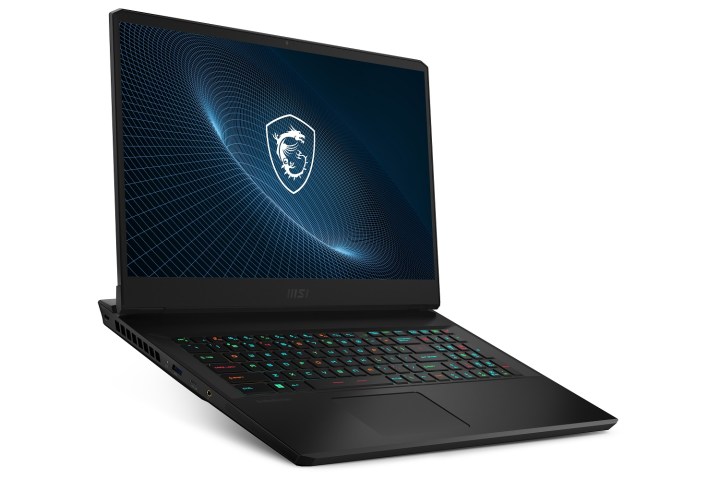MSI unveiled its roster of laptops for the new year at CES 2022, including updates across the entire range and changes to specific models. The most striking change is a Phase-Change Liquid Metal Pad included in models with an unlocked Intel Core i9 processor, which melts when the CPU heats up and solidifies when temperatures are low.
It’s a cross between traditional thermal paste and liquid metal. MSI tells us that liquid metal presents too many problems — it’s hard to apply, it can short out components, and it needs to be replaced much faster than traditional thermal paste. The Phase-Change Liquid Metal Pad, as MSI is calling it, solves that problem and can result in up to a 10% boost in overclocking performance.
The cooling solution is the most striking change, but MSI updated all of its gaming laptops — some of which are part of our roundup of the best gaming laptops — with the latest GPUs from Nvidia and latest CPUs from Intel. Here’s a rundown of the range.
Stealth GS77 and GS66

We rate the Stealth GS66 as one of the best gaming laptops around, and MSI is building on that design. The 15.6-inch (GS66) and 17.3-inch (GS77) models have both been updated with 12th-gen Intel H-series processors, along with the newly announced mobile RTX 3080 Ti and RTX 3070 Ti.
Outside of specs, MSI moved the hinge to the middle of the display for better durability and improved the keyboard. Overall, MSI says the keys are about 8% larger with a thinner numberpad. MSI also increased the size of the touchpad, which is true across the entire 2022 lineup.
Unlocked Core i9 systems will benefit from the liquid metal cooling, but the other models use a traditional cooling solution. Prices start at $1,799 and $2,499 for the GS77 and GS66, respectively, and MSI is offering three screen options: Full HD at 360Hz, 1440p at 240Hz, and 4K at 120Hz.
Raider GE76 and GE66

The Stealth series is for those that want a powerful, thin, and light gaming laptop, while the Raider series is built for those focused solely on gaming. With a larger chassis and thermal improvements, MSI says the 2022 models can support 220W of power through overclocking, aided by the liquid metal cooling solution on unlocked Core i9 configurations.
Like the Stealth series, you can configure the 17.3-inch Raider GE76 and 15.6-inch Raider GE66 with up to a Core i9-12900HK and RTX 3080 Ti, along with 32GB of RAM. You can configure these machines with the same screens as the Stealth series, too, with prices starting at $1,599 for the Raider GE76 and $2,249 for the Raider GE66.
The Raider is thicker than the Stealth, but MSI puts the extra space to good use. On the front, you’ll find a light diffuser that allows RGB lighting to spill out of the front of the laptop. The bottom also includes a honeycomb design that should allow air to easily enter and exit the body.
Vector GP76 and GP66

The Vector machines are cheaper and slightly less performant versions of the Raider laptops. You still have the option between a 17.3-inch (GP76) or 15.6-inch (GP66) screen, but MSI isn’t offering a configuration with a 4K screen. Still, you can pack up to a Core i9-12900HK and RTX 3080 in the machine, paired with up to 32GB of RAM.
MSI tells us that these Vector machines are built for professionals that also want to game. They ditch the RGB for a matte black finish around the body, only accented by per-key RGB lighting. Prices start at $2,399 for the GP66 and $1,899 for the GP76.
MSI Pulse, Sword, and Katana

The Stealth, Raider, and Vector ranges are MSI’s flagship laptops, but the company also updated its Pulse, Sword, and Katana ranges. These machines don’t scale as high as the other ranges, with most models offering H-series Core i7 or i5 processors along with up to an RTX 3070 Ti. Prices are much lower, too, with the Katana starting at only $1,099.
All the machines are limited to a Full HD screen at 360Hz, which makes sense given the hardware inside. There are some external improvements, including new art and up to 15% better airflow on Pulse machines, but the designs are mostly the same as last year’s models.



